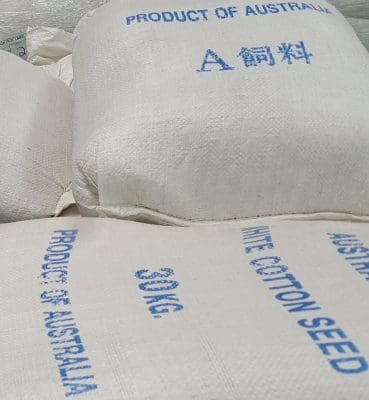AUSTRALIA’S Gene Technology Regulator (GTR) this week issued a licence to Syngenta Australia which could remove a perceived impediment to the sale of cottonseed from the now dominant Bollgard 3 varieties into China’s compound feed and oils sector.
 The new licence applies to Vip3A, one of three insecticidal genes in Bollgard 3 varieties, and the one which differentiates it from its Bollgard 2 predecessor.
The new licence applies to Vip3A, one of three insecticidal genes in Bollgard 3 varieties, and the one which differentiates it from its Bollgard 2 predecessor.
Bollgard 3, referred to by GTR as COT102, would be expected to trade in significant volume this year to China, which last year imported around 300,000 tonnes of the approximately 1.3 million tonnes (Mt) of cottonseed produced in Australia. Final clearance of trade documentation by China, including the certificate pertaining to the most recent licence, would help reduce risk on future transactions.
Chinese New Year celebrations and holidays commenced today for one week so timing of clearance, likely not before March, would coincide well with Australia’s post-Easter ginning period.
Trade sources said China trade confidence leading into this summer cropping season had been low for Australian seed compared with ready supplies of United States-origin seed. They were hopeful GTR’s licensing of the third gene would encourage Chinese clearance and allow a similar quantity of Australian cottonseed active trade to flow in 2018 too.
Cheap seed appeal
Cottonseed prices in Australia have already fallen more than 20 per cent since last year, and traders hope demand driven by lower prices will soon emerge.
Lacklustre seed bids from ginners and traders have disappointed growers, who in previous years have relied on strong cottonseed returns to cover their ginning costs.
Gins have told growers this was unlikely to be the case in the 2018 ginning season, and the market is looking for outlets to provide some direction as gins in Queensland and New South Wales start up.
On both the domestic feedgrains front, where there has been no let-up in grain prices paid by consumers, and into export channels, cottonseed’s cheapness would start to buy greater demand for fuzzy white cottonseed.
Other protein substitutes have lifted in price too. The soybean meal futures price has traded firmer this month on uncertainty in Argentinian soybean production; higher import parities would reduce the competitiveness of the million-odd tonnes imports of various protein meals into Australia.
While some commercial GM cotton varieties have introduced genes for herbicide tolerance, the GM cotton authorised by the new licence is not modified for herbicide tolerance.
Australian growers were the first in the world to plant Bollgard 3 in 2015 under a research permit from the Australian Pesticides and Veterinary Medicines Authority (APVMA).
Since then APVMA had approved the insecticidal protein in the GM cotton for commercial scale release.
Food Standards Australia New Zealand (FSANZ) had also approved the use of food derived from it.
Monsanto said the insect control technology incorporated into these seeds was commercialised under a licence from Syngenta Crop Protection AG.
More than 1000 growers have planted 452,000 hectares of cotton across Australia’s cotton growing regions this season, and more than 95 per cent of the crop was sown using Bollgard 3 seed.

HAVE YOUR SAY